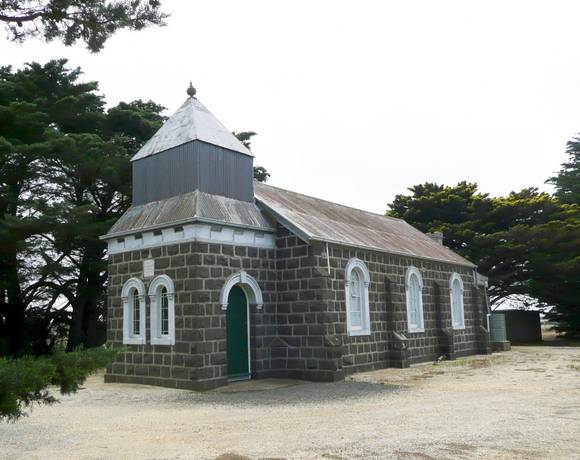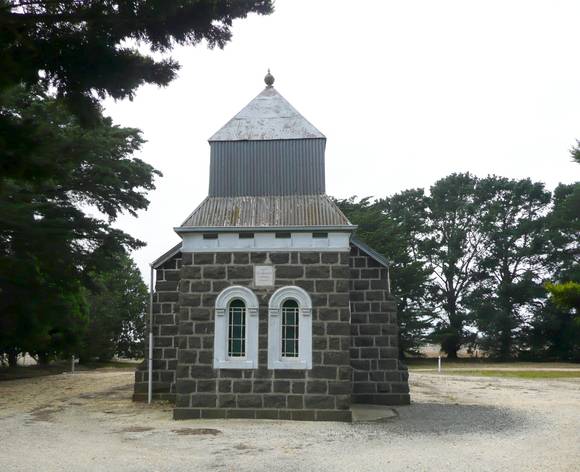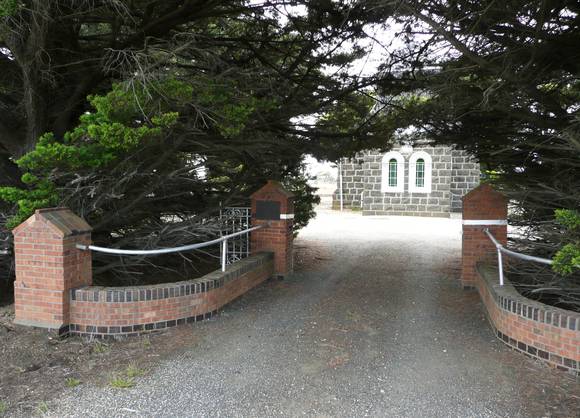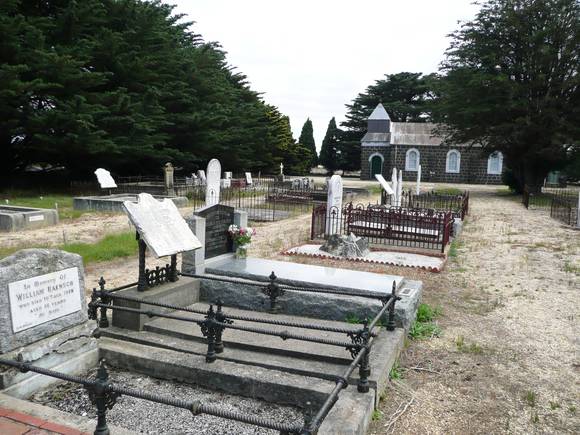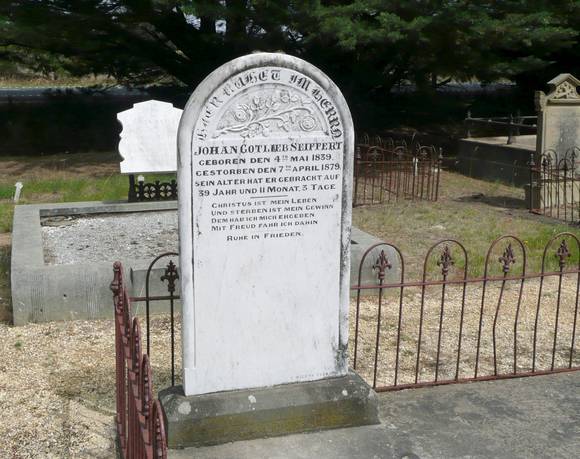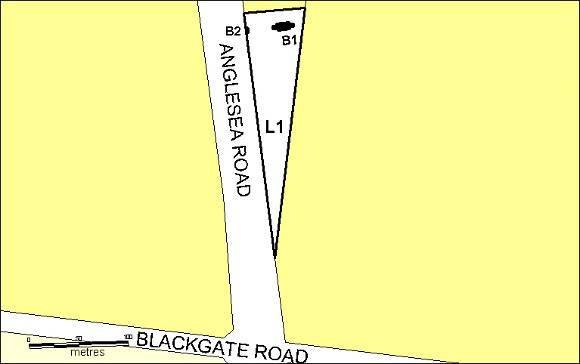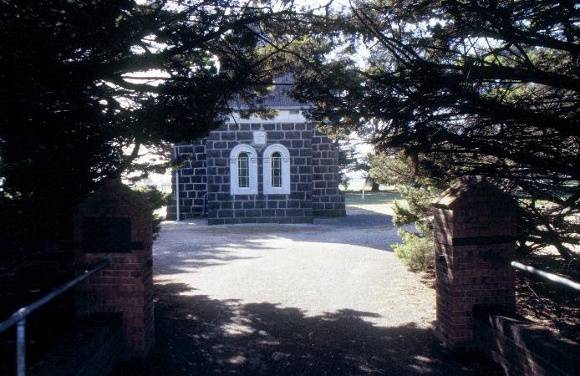| Back to search results » | Back to search page » |
|
ST DAVID'S LUTHERAN CHURCH AND CEMETERY
Other NamesLUTHERAN CHURCH , GERMAN CHURCH Location905 ANGLESEA ROAD FRESHWATER CREEK, SURF COAST SHIRE
File Number604427LevelRegistered |
|
Statement of Significance
What is significant?
The first German Lutherans settled in the district around Grovedale (Germantown) in the early 1850s. By the late 1850s the settlement at Freshwater Creek was established. Initially services were held in the homes of members until the first church, a wattle and daub structure, was built in 1859. It was known as the Waldkirch – “the church in the forest”. Their first pastor was CW Schurmann from Hochkirch (now Tarrington), near Hamilton. The first burial took place in 1860 when Louisa the 18 year old daughter of the Seiffert family died of pneumonia.
The present bluestone church, designed by architect Robert Tuffs, was commenced in 1866 by church members with stone believed to have been quarried from the Seiffert property along Thompson's Creek. Many of the families contributed financially to the building of the church. The church and cemetery were part of the social and cultural life of the congregation as well as their place of worship and burial place.
The architect R. S. Tuffs lived in the Grovedale (Germantown) area and was a surveyor and the first engineer for the local shire. He was also responsible for the Methodist Church in Grovedale, St Paul's Lutheran Church, Grovedale and the Grovedale Primary School.
How is it significant?
St David's Lutheran Church and Cemetery is of historical, social, aesthetic and architectural significance to the state of Victoria.
Why is it significant?
St David's Church and Cemetery have historical significance as a rare example of a churchyard cemetery in Victoria. There is a small group of churchyard cemeteries surviving in Victoria, including St Andrew's Church of England, Brighton and Westgarthtown Lutheran Church (H899). By the time of European settlement in Victoria, churchyard cemeteries which had been the accepted burial grounds in western countries for centuries were on the wane. Increasing concerns about sanitation and the growing popularity of garden cemeteries influenced by the Romantic and Picturesque ideals led to their decline. St David's then is a rare link in Victoria to this old practice of burial.
St David's Church and Cemetery have historical importance for their association with the German Lutheran settlers who came to the area in the 1850s and associations with the wider history of German/Lutheran immigration to Australia in the 19th century. This association is evident in the German inscriptions and symbolism on the gravestones.
The Cemetery has social significance for its representation of burial practices, religious customs, values and tastes from 1860 until the present. It has further social importance for the insight it provides into a community who saw the church and cemetery as an intrinsic part of their religious, social and cultural lives where they worshipped, celebrated, socialised and buried their dead.
St David's Church has architectural significance as an example of a simple church of provincial German character with a combination of medieval detailing in the stepped buttresses and the turretted chimney of the vestry and Renaissance treatment of the arched windows.
St David's Church and Cemetery have aesthetic significance for their picturesque setting and layout with a simple bluestone church and churchyard cemetery enclosed by exotic plantings and surrounded by a rural landscape. The perimeter plantings of Cupressus macrocarpa (Monterey Cypress), Cupressus maerocarpa 'Horizontalis Aurea' (Golden Cypress), Cupressus torulosa (Bhutan Cypress) and Pinus radiata (Monterey pine) are significant aesthetic features of the site. The front gateway with its overhanging trees and vista to the church beyond is another aesthetically significant aspect. The aesthetic value of the site is enhanced by the collection of gravestones and other examples of funerary art.
Group
Cemeteries and Burial Sites
Category
Cemetery/Graveyard/Burial Ground


